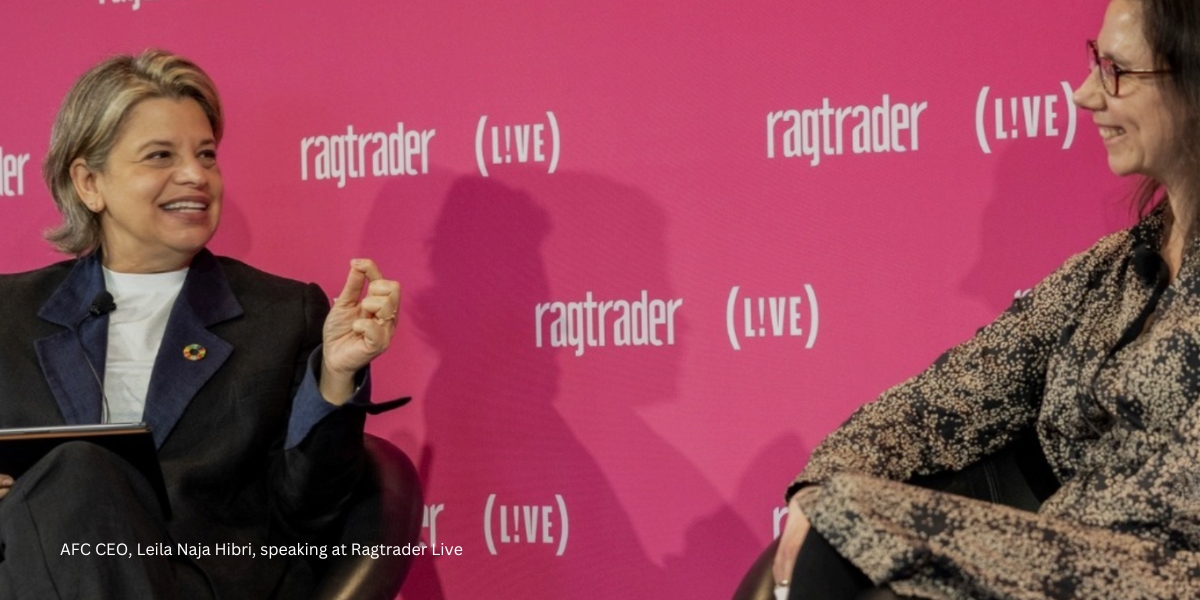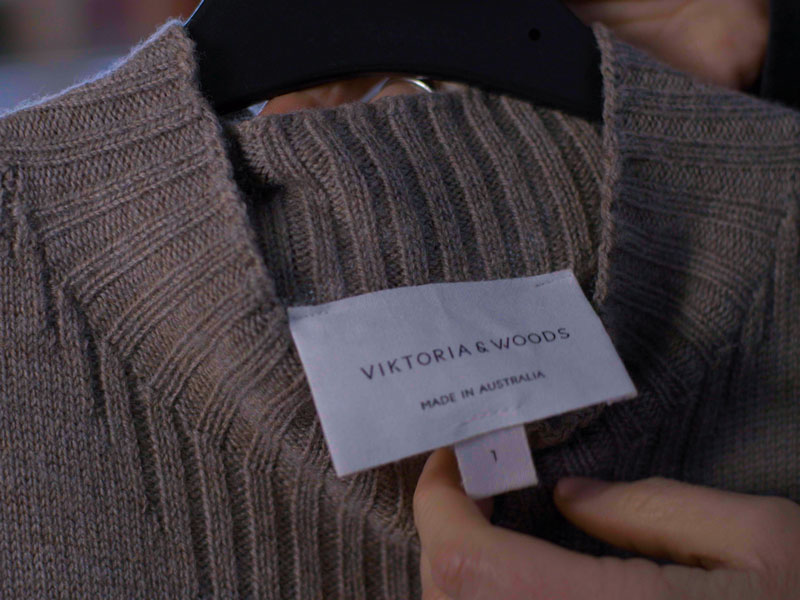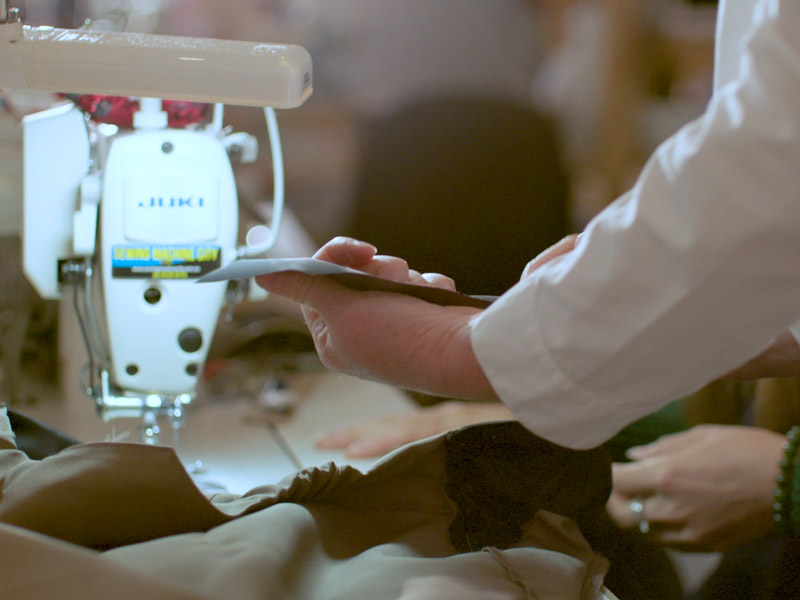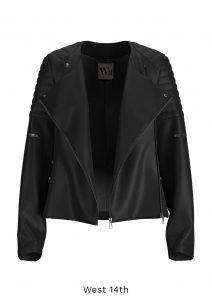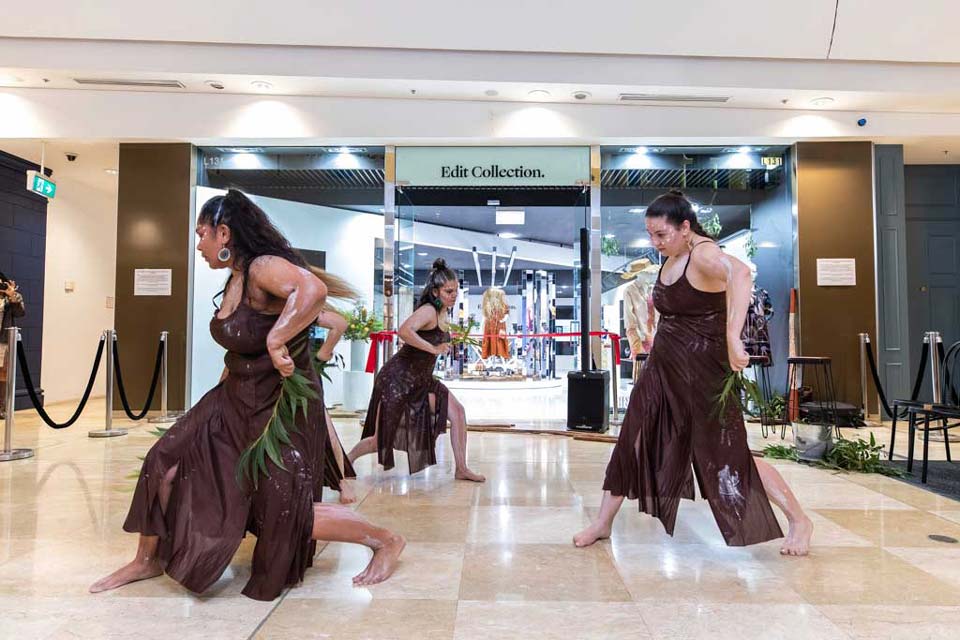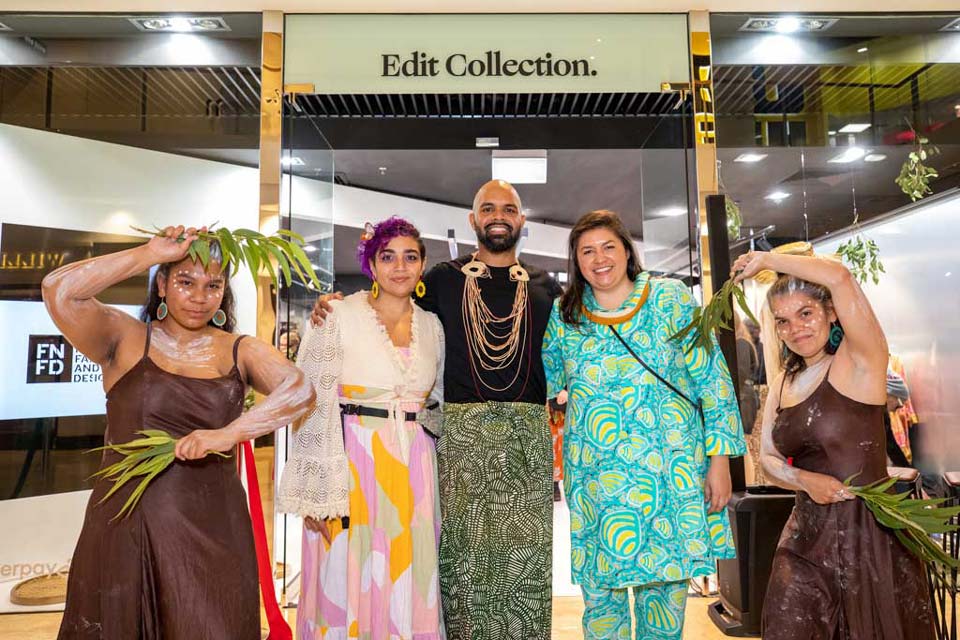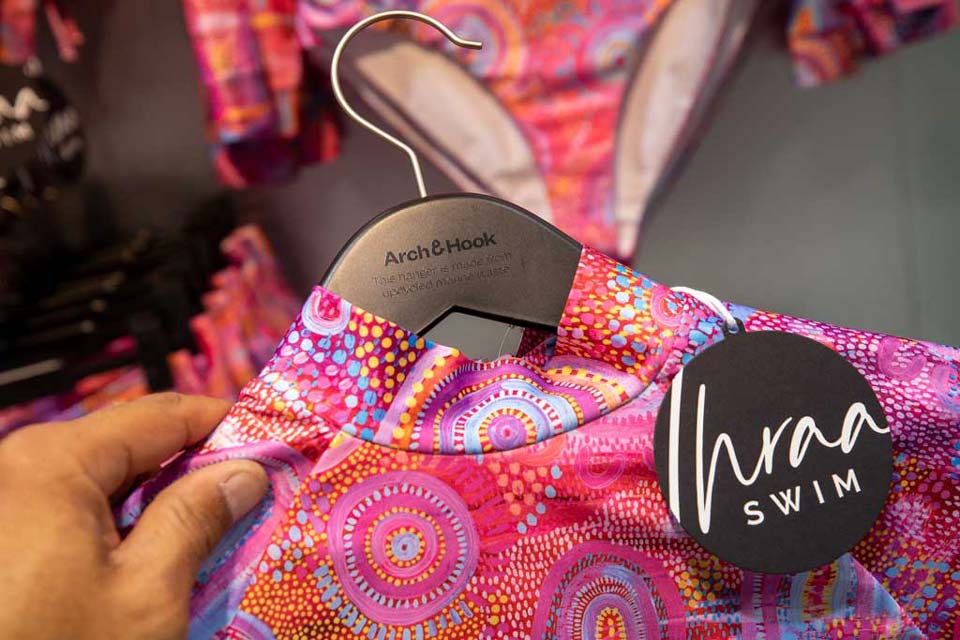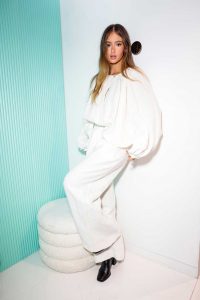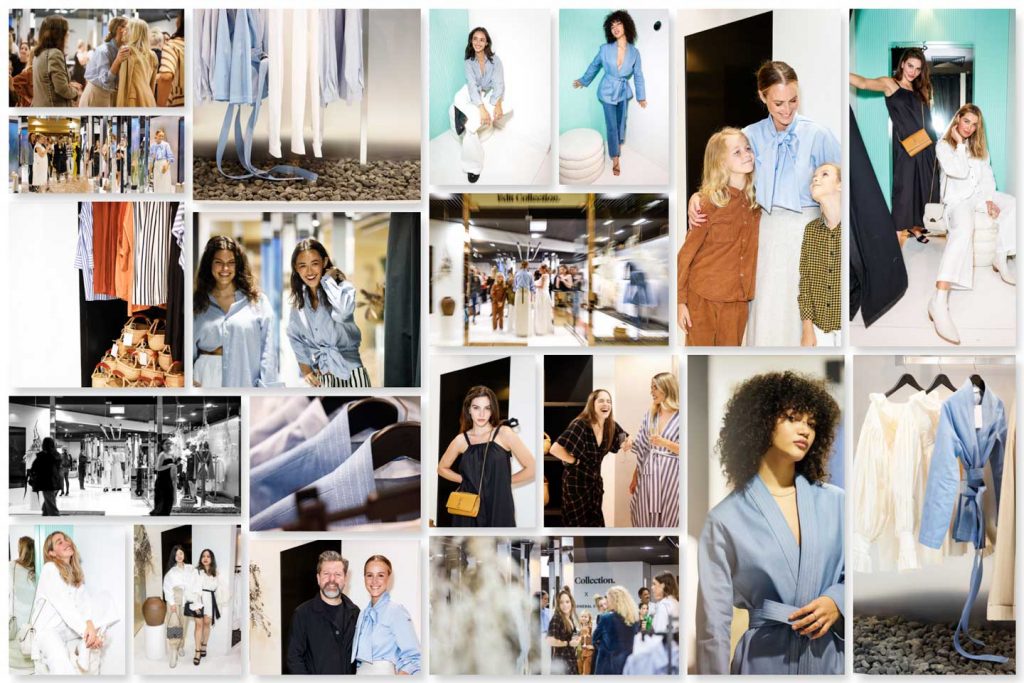Welcome to the AFC Expert Series, designed to offer insights from our AFC Patron Members. Immerse yourself in the dynamic world of fashion, textiles, sustainability and technology, as we bring you perspectives and expertise from industry leaders across the clothing value chain.
Embarking on a journey towards a more responsible future, DECJUBA introduces 'DECJUBA Future' an initiative that evaluates materials based on sustainability factors such as compliance, circularity, and supply chain transparency, intending to help their customers make more considered purchases.
We had the privilege of interviewing Kate Carroll, DECJUBA's Head of Sustainability, to delve into the launch of this initiative, the challenges encountered, and the responses from consumers.
With an environmental science background and having recently completed her MBA, Kate brings a wealth of knowledge cultivated over 15 years in environmental management and sustainability across diverse industries. She reflects on the evolving focus in the industry, transitioning from merely 'doing less harm' to the imperative of 'doing more good'.

1. Can you tell us a bit about ‘DECJUBA Future’ and what inspired the team to launch the initiative, was customer demand a driving factor?
DECJUBA Future is a responsible sourcing initiative driven by our Founder, Tania Austin, and fueled by our commitment to becoming a more responsible fashion brand. It responds to the growing demand from customers for both transparency and sustainability in fashion, including feedback from our customers.
The majority of those surveyed supported responsibly sourced products and sustainable practices.
We're focused on using fibres with a lower environmental impact, with our DECJUBA Future-approved products ensuring at least 80% are green-tier fibres. Our journey involves transparently sharing this information on our website. As we work toward our 2027 targets, it's a collaborative effort across our business to deliver both amazing products and a positive impact.
2. Why is transparency and education important to drive as the Head of Sustainability at DECJUBA? What are some initiatives you have implemented/currently exist to drive this?
Transparency and education hold pivotal roles in our mission and values for several compelling reasons.
Firstly, they serve as vital enablers within the industry, driving improvements in both social and environmental performance. Equally important to this, is the role of transparency in building trust with our customers. By openly communicating that we are on a sustainability journey, we aim to establish an understanding that sustainable growth demands both time and commitment.
We are eager for our customers to join us on this journey, by raising their awareness to help them buy better.
Connecting our internal team to our sustainability journey and fostering better decision-making and accountability is crucial. We achieve this by engaging our teams in sustainability strategy targets through internal sessions and team meetings focused on their specific work areas. Regular meetings with key stakeholders are also scheduled to track performance and discuss improvement opportunities. Our sustainability scorecard, updated quarterly, provides a transparent overview to the leadership team.
The sustainability targets we are working towards include a new 5 green star head office building, 100% renewable energy, 100% reusable, compostable or recyclable packaging, and a circularity program or partnership focusing on sustainable innovation and impactful new models that keep valuable resources in use for longer.
3. What challenges have you encountered in transitioning to green-tiered fibres?
Transitioning to green-tiered fibres has been a complex process of researching responsible fibres over 18 months and developing our framework before launching it to our customers. The process has presented several challenges for our team to overcome, including:
- Availability and Cost: Acquiring responsible, lower-impact fibres that meet quality standards at a competitive cost has been an ongoing challenge. However, we are committed to prioritising this and we anticipate that this will improve as demand increases in the future. As more brands choose responsible fibres such as recycled fibres, this will help to make these lower-impact fibres more cost-competitive over time.
- Verification and Claims: Ensuring the trust and verifiability of claims and certifications regarding responsible fibres has been a significant consideration for Decjuba - it requires scrutiny to ensure it aligns with our commitment to transparency.
- Balancing Priorities: At Decjuba, we acknowledge that this is a journey and we’ve had to prioritise specific fibres while striking a balance between price considerations and sustainability attributes. This ongoing process reflects our commitment to making responsible choices in the realm of fibre selection, such as our use of Good Earth Cotton grown in Australia.We use a value/effort matrix, also adjusted for impact, to help us consider our options and prioritise where to focus our efforts and resources next. This helps the team understand what opportunities represent ‘low hanging fruit’ and the strategic sourcing decisions we need to make longer-term that will help us achieve our goals.
4. How do you view the importance of empowering customers to make eco-conscious choices?
Empowering our Decjuba customers to make better choices is extremely important to us. We recognise that consumers play a pivotal role in driving positive environmental impact through their purchasing decisions. By providing information, transparency, and sustainable options, we aim to enable our customers to make choices that align directly with their values.
We feel this not only contributes to a more sustainable industry but also fosters a collective sense of responsibility toward the environment. Consumers are committed to doing the right thing and making better choices in the sustainability space. Our responsibility is to provide those options and choices in a way that is convenient for them.
5. Have you noticed a substantial rise in expenses associated with the implementation of environmentally friendly fibres, and what strategies does your business have in place to address the possibility of increased material costs?
We approach the implementation of environmentally friendly fibres with a balanced perspective, considering factors like margin, region, and sustainability. While we absorb sustainability price premiums where possible, and of course, this can present challenges.
Fortunately, recycled fibres such as recycled polyester or nylon have proven to be cost-competitive. Additionally, we’re actively exploring efficiency improvements in other aspects of our operations, such as ordering and stock management, to potentially offset any increased material costs.
It’s a strategic and adaptive approach to our business practices with sustainability goals.
6. Tell us about your participation in the Textile Exchange recycled polyester challenge and your goals for the challenge.
Our four-year membership with Textile Exchange has been invaluable, reinforcing our commitment to sustainability. Our participation in the Textile Exchange material challenge is a significant step, pledging to source 80% or more of the total polyester in our products from recycled polyester by 2025.
This commitment aligns with our dedication to circularity and responsibly sourced green-tier fibres through our DECJUBA Future initiative. It's a tangible demonstration of our ongoing efforts to drive positive environmental impact within the textile industry.
7. What recommendations can you offer to fellow brands that are considering a switch to green-tiered fibres?
For brands contemplating a switch to green-tiered fibres, we would recommend:
- Thorough Market Research: Research the marketplace thoroughly to understand available options and best practices. The Textile Exchange Preferred Fibre & Materials Matrix can be a valuable resource in guiding your decisions.
- Strategic Prioritisation: Prioritise efforts by evaluating the impact of fibre options based on an effort, value and impact matrix. This allows you to focus on areas where you can make the greatest change efficiently within the context of your business. This is an important step towards scaling the impact your business can have, rather than trying to spread your efforts too thin.
- Circularity Considerations: When making choices, consider the circularity of your options and how they contribute to a circular economy, such as sourcing recycled fibres that have a lower impact. This ensures that your decisions align with broader sustainability goals.
- Verify Sustainable Claims: Ensure confidence in the credibility and integrity of any claims regarding sustainable fibres. Transparent verification adds authenticity to your sustainability initiatives and builds trust with your audience.
With special thanks to Kate Carroll and the team at DECJUBA.




